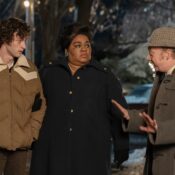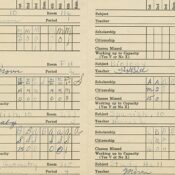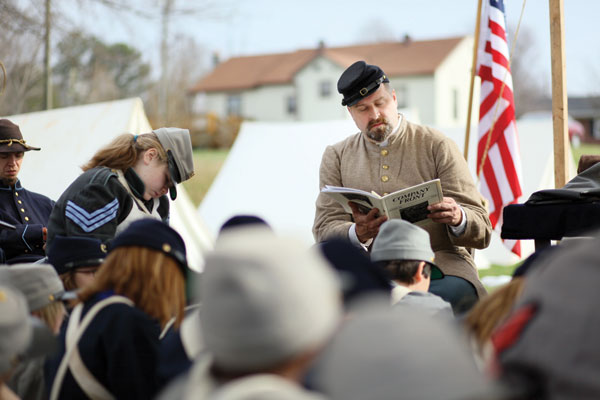
Photos courtesy Whitebox Photo.
“Attention, company! Shoulder arms! Right face!” Eric Marshall calls out over the rat-tat-tat of a snare drum.
Standing head and shoulders above the 11-year-olds around him, Marshall looks left and right, taking a quick inspection of the troops. Wearing a Confederate soldier’s sack coat and a kepi that tilts slightly over his right eye, he looks very much the part of the lieutenant he’s portraying.
It’s the second day of Camp London. He is in character and so is every single fifth grader at London Elementary School in Walnut Cove—all of them transformed into members of the 26th North Carolina Regiment, ready to march into battle at Gettysburg.
Camp London is Eric Marshall’s response to every kid who ever complained that history is boring.
“It just riles me up to hear that,” he says. “I hate to hear it because I know it doesn’t have to be true.”
Each spring, Marshall—along with help from fellow fifth-grade teachers and parent volunteers—transforms a field next to the playground at London Elementary into a living Civil War camp, with no detail left to chance. At the lower end of camp, a large covered wagon and a three-quarter-size replica of a cannon that shoots a puff of flour are pulled in. Positioned at the upper end is a wagon holding wooden cutout rifles that were made for camp by a middle-school shop class. In between, 11 canvas tents rise from the ground, tied down with rope and wooden stakes. Cast-iron skillets and cooking utensils dangle from hooks around the fire ring, and a bugle hangs from the tent pole at the command tent.
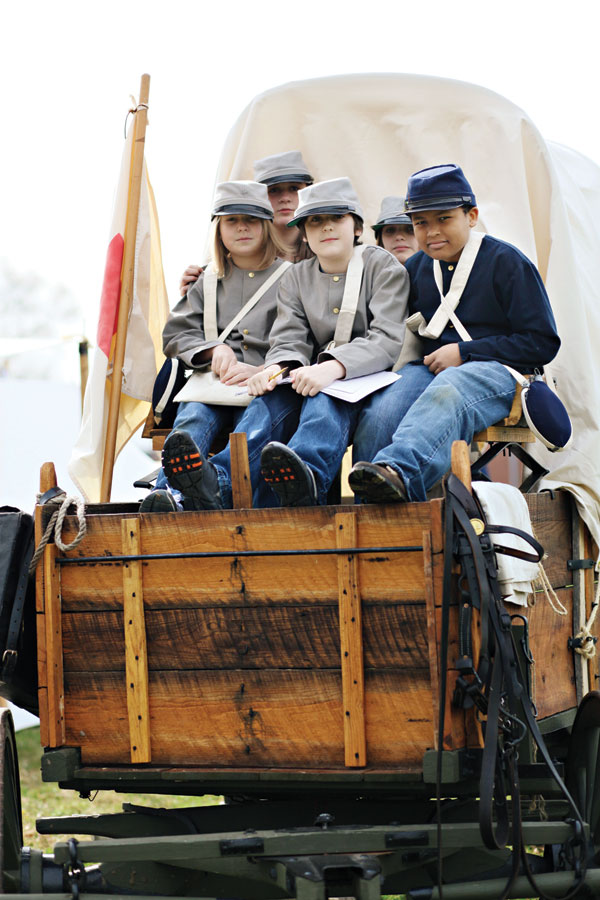
Into this setting, the students march, leaving behind a normal school day, wearing their own blue and gray Civil War coats and kepis, with haversacks and canteens strapped over their shoulders. They come prepared to be outside for a journey back in time that will linger with them much longer than their remaining days in elementary school.
The Camp London experience caps several weeks of classroom study on the Civil War. They study key battles, learn about slavery, and even bake and eat their own hardtack—the tough, salty cracker that was a staple for soldiers on the march. “They get a feel for what the soldiers’ lives were like, what they carried into battle, and how they survived,” Marshall says.
Marshall, a longtime Civil War reenacter, came to teaching 15 years ago in his mid-30s following a career in jewelry sales. “I really see reenacting as an extension of teaching,” he says. “And fifth grade is the perfect age for this. They are old enough to understand the lessons, but they still have enough imagination to make it work. If we’re doing a reenactment, and I say there’s an enemy in the woods, they can see it. They can feel it as surely as if it were real.”
Fifth grader Ashlee Lyons awaits her orders with a drum strapped over her gray coat, as two flags representing the 24th Michigan Infantry wave in the wind across a battlefield. Ashlee knows that today’s reenactment—July 1, 1863—was a difficult one for the 26th North Carolina as it faced 24th Michigan on the first day of fighting at the battle of Gettysburg. She has learned that Col. Henry Burgwyn, the brigade’s leader, was killed in action. She also learned that the North Carolina flag fell to the ground 14 times as the young soldiers carrying it were wounded or killed. And she knows that the 26th returned to camp at day’s end with less than one-third of its original 800 soldiers.
At the appointed time, Marshall issues his command, “Forward march!”
On cue, the students move in unison, shoulder-to-shoulder, falling into the familiar formation they’ve been practicing in the hallways and at recess for weeks. From the rear, Ashlee and the other drummers beat out a rhythm, pushing the soldiers into battle.
The student sergeants yell, “Ready! Aim! Fire!”
The front line of soldiers responds in unison with a hearty “Boom!” before lowering their wooden cutout rifles to “reload.”
They see the Michigan flags getting closer, and they watch the North Carolina flag fall and rise and fall again, all 14 times.
Many of them feel a tap from Marshall on their shoulders, a signal that they’ve been wounded and should fall to the ground.
But they push toward the flags of the 24th Michigan, recreating the scene that played out at Gettysburg 150 years ago.
“Company, halt!” Marshall calls out, as the 26th North Carolina and 24th Michigan come within 20 yards of each other, just as they did that day at Gettysburg.
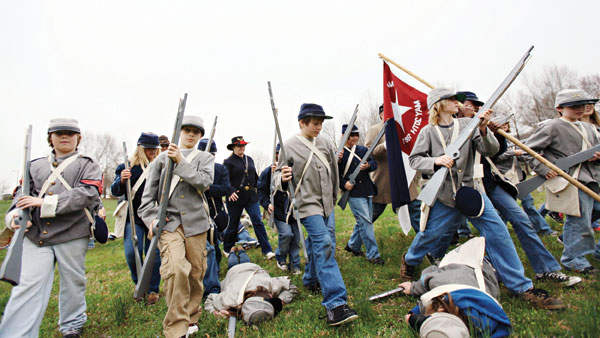
As the noise dies down and the drumming stops, Marshall motions for the students still standing to turn and look behind them. In near silence, they see what occurred during their forward march. They see the battlefield littered with wounded soldiers. They see that the number of injured and dead is far greater than the number left standing. They watch as an out-numbered hospital crew tries to help as many people as possible.
Right then, something clicks for the students. Marshall sees it in their faces and hears it in their voices when they talk about it later. He reads it in their journals. “It’s one of those chilling moments when the kids turn to look because I’m able to tell them that the view was the same on both sides,” he says. “Regardless of the politics, regardless of the blue or the gray, these soldiers were all Americans, and the tragedy is that what they saw as they left the battlefield was the same, North or South.”
Reprinted by permission from Our State magazine © 2010
Become a Saturday Evening Post member and enjoy unlimited access. Subscribe now


